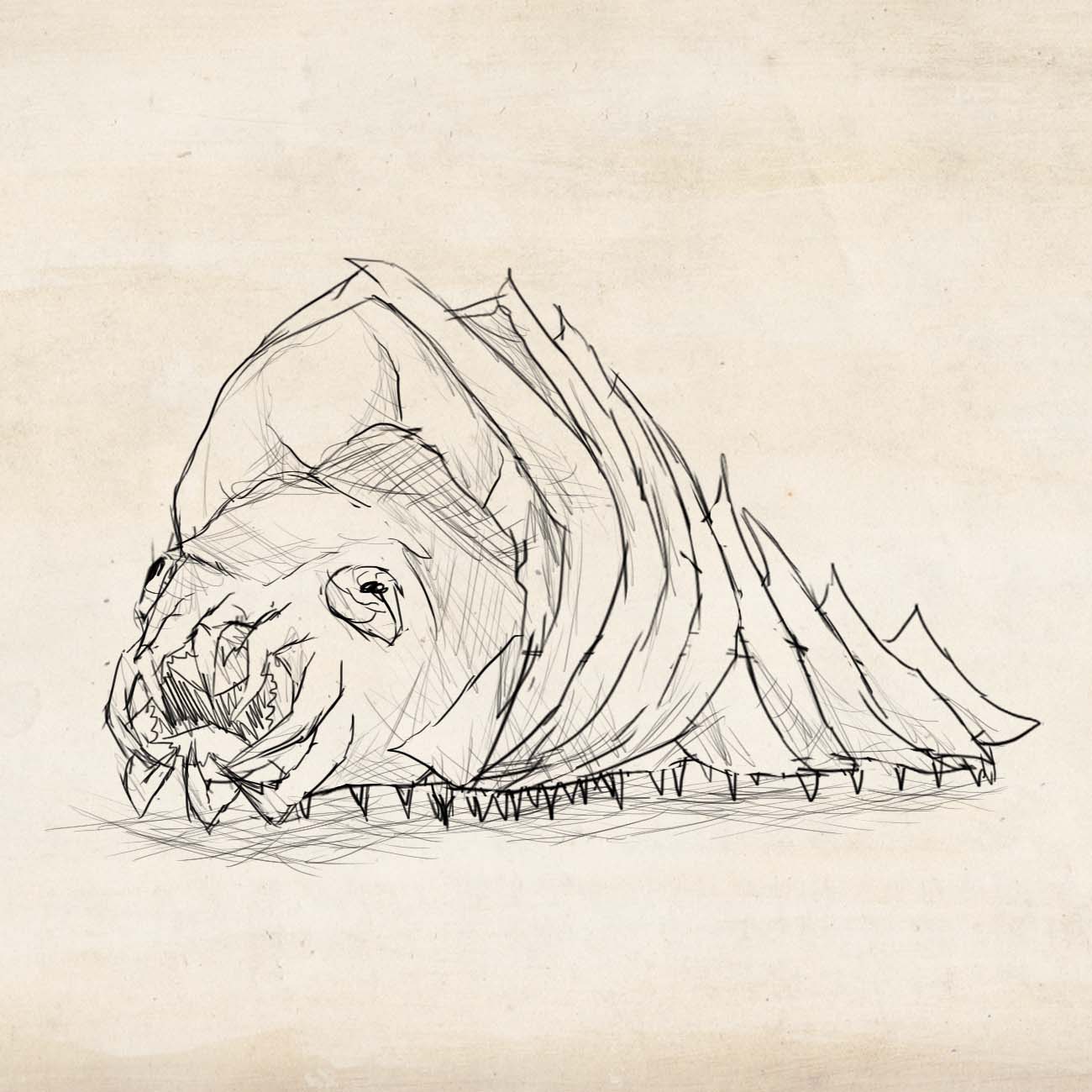Armored Nautiloid
A small arthorpod-esque creature built for life in extreme conditions. It best known for its thick armored shell, which drops in a manner similar to a drawbridge, and forms a cocoon from the creature to rest in as well as to guard against threats. When sand storms strike, these creature rotate their shells to cover their entire bodies, with some weighing themselves into the sand to avoid getting carried off, and others curling into a ball and riding the currents away. Both strategies seem to work with their tough shells.
Basic Information
Anatomy
The Armored Nautiloid has a long thin body tucked within a thick exoskeletal shell. The shell is made up of segments with tough spines poking from the top, and the front part of the shell can be rotated to completely encase the creature's body. Underneath the shell are the nautiloid's numerous tiny legs. The creature's face just barely sticks out from the shell, containing a mouth ringed with jointed feeding appendages, and large eyes able to rotate to any angle.
Genetics and Reproduction
These creatures will generally mate without very much trouble, but they can still be choosy about who in their school they mate with. They have been found to mainly choose mates based on shell strength and size, and they will produce dozens upon dozens of eggs. Nautiloid schools will leave their eggs behind in crudely made holes in the ground, due to the adults not being able to properly care for the eggs due to their active lifestyle, as well as the eggs being almost indestructible anyway.
Growth Rate & Stages
These creatures start out looking like very tiny shelless grubs. Because of their small sizes, no other creature would bat an eye at them, and they can survive by simply digging through the sand for food. They feed on a small specific type of plant growing plentifully in between the cracks in the sand, and once they've eaten enough, they'll dig themselves in the sand and form cocoons around themselves. These cocoons are tough, and get absorbed into their bodies by the end of the growth period, forming their signature shells. After they emerge, they'll have enough strength to begin their usual adult life.
Ecology and Habitats
Armored Nautiloids are found in the Fields of the Nightlight Zone, in just about in any environment. They are mostly found traveling in small groups, searching for dense groupings of boulders where their food grows. Some have also been found with their shells curled over themselves while in a period of rest, and others moving small rocks with their feeding arms.
Dietary Needs and Habits
Being herbivores, Armored Nautiloids will feed on both the Trivinea and Polyweed. One individual of a school will climb up to the top of a Polyweed stem, weighing the plant down with its heavy shell, and allowing the others to feed at the same time. It also helps that their shells are invulnerable to the Polyweed's strikes. Meanwhile, the Trivinea are relatively easy to feed off of for these creatures.
Additional Information
Social Structure
Most often, Armored Nautiloids can be found in groups of four, relying on strength in numbers to survive. Together, they have been shown to coordinate better, with looking out for threats and alerting the others ahead of time, as well as helping each other reach their food. This is usually the extent of their sociality, however.
Perception and Sensory Capabilities
These creature's eyes can rotate at almost any angle independent of each other, making them a surefire way for sensing threats and spotting food. They have been found to have rather underdeveloped senses of hearing and smell, relying solely on sight instead.
History
These nautiloids were likely very successful when they first inhabited the Ash Fields, able to withstand the currents with their heavy shells. There was a time when they covered every square inch of their environment, but when predators first came along, they easily gained sustenance from the abundance of the nautiloids. The various carnivorous species experienced a brief population boom, before becoming overpopulated and experiencing mass die-offs. This likely left only a few surviving members which populate the Fields today.
Scientific Name
Nautilidae testa
Lifespan
Unknown
Average Weight
80 lbs
Average Length
1 ft.
Average Physique
Bulky
Body Tint, Colouring and Marking
Red skin, dark brown shell
Geographic Distribution
Average
Remove these ads. Join the Worldbuilders Guild










Comments